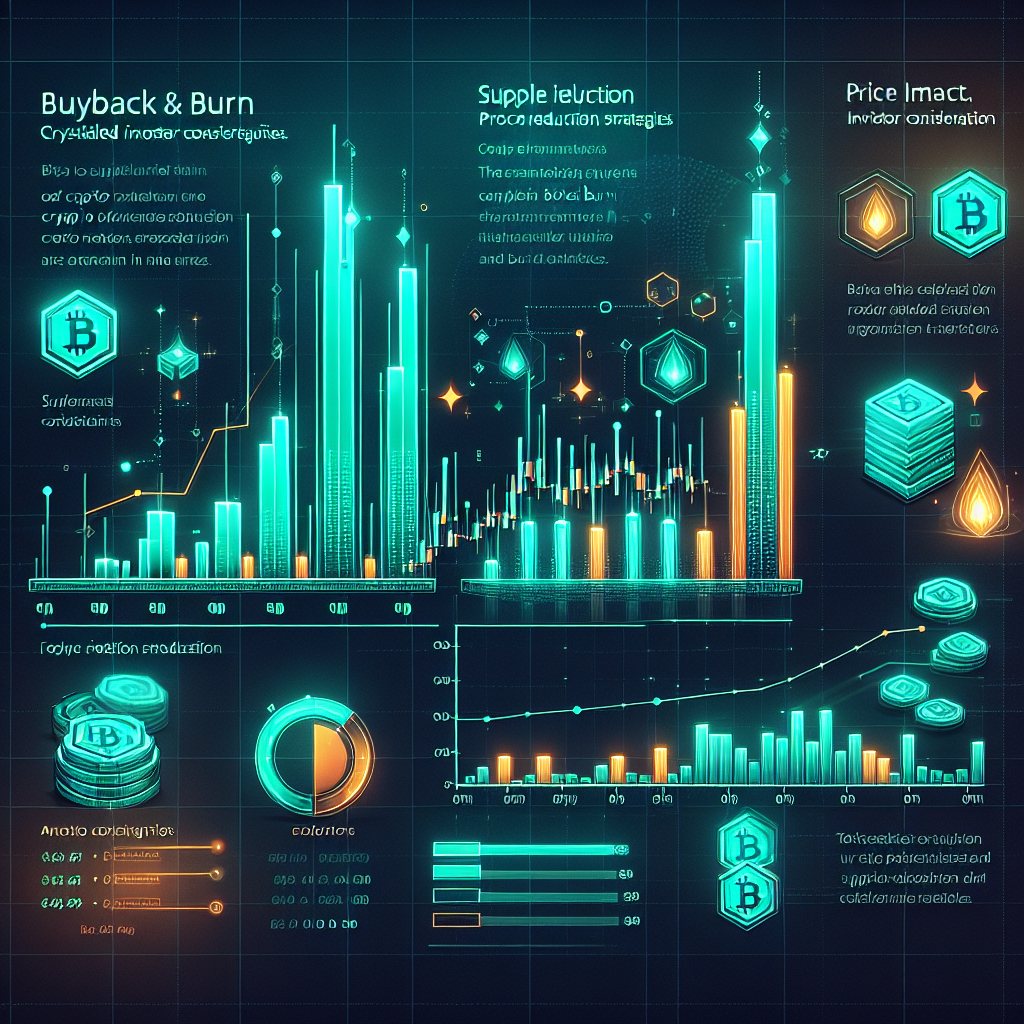Crypto Token Buyback and Burn Mechanics: Supply Reduction Strategies, Price Impact, and Investor Considerations

Introduction
Crypto projects are constantly exploring ways to increase token value and reward long-term holders. One of the most talked-about strategies is the token buyback and burn model, sometimes called a deflationary mechanism. Similar to stock buybacks in traditional finance, projects purchase tokens on the open market and permanently remove ("burn") them from circulation. This article explains how these mechanics work, why teams employ them, and what investors should consider before buying into tokens that promise aggressive supply reduction.
What Are Buyback and Burn Mechanics?
A token buyback occurs when the project team, its treasury, or a smart contract acquires tokens from the secondary market using revenue, reserve funds, or protocol fees. Instead of keeping the tokens, the project then sends them to an irretrievable address (often called a burn address) or employs a burn function inside the smart contract. The result is a lower circulating and total supply.
Because blockchain transactions are transparent, anyone can verify the burn on-chain. Most major blockchains expose burn addresses that are publicly viewable, providing an auditable record of how many tokens have been destroyed over time.
How Supply Reduction Works
Deflationary Economics
Removing tokens from supply increases scarcity, and basic economic theory suggests that when demand remains constant while supply falls, price pressure turns upward. In crypto, this effect can be magnified because token supplies are often fixed or capped.
Buyback Funding Sources
Common sources include:
• Protocol revenue (trading fees, lending interest, yield aggregator performance fees)
• Treasury reserves (tokens held by the project or stablecoin balances)
• Percentage of block rewards or staking emissions allocated to buyback contracts
Some protocols use an algorithmic approach whereby every on-chain transaction triggers a micro-buyback funded by a tiny transaction tax, creating a continuous burn loop.
Burn Execution Methods
1. Manual burns: At preset intervals, the team executes a buyback and manually transfers tokens to the burn address.
2. Smart-contract burns: Automated processes accumulate fees into a treasury, periodically swapping them for the native token and burning it in one on-chain transaction.
3. In-protocol burns: Certain architectures bake the burn into core logic; for example, each trade on a decentralized exchange may automatically allocate a percentage toward burning.
Effects on Token Price and Market Perception
Short-Term Price Reactions
Announcement of a buyback can spark immediate speculation as traders anticipate decreased supply. If the buyback is executed on a public DEX, visible large orders can create positive order-flow momentum. However, bots sometimes front-run burns, leading to volatility.
Long-Term Valuation
Over time, consistent supply reduction can lower the market capitalization threshold needed for each token to achieve a given price, potentially benefiting holders. Projects that fund burns with genuine cash flow also demonstrate sustainable economics, enhancing investor confidence.
Psychological Impact
Burn programs signal commitment by the project team, similar to how share repurchases communicate confidence in a company’s future. The narrative itself can drive demand, independent of the actual number of tokens burned.
Strategic Considerations for Projects
Balancing Liquidity and Scarcity: Burning too aggressively can reduce exchange liquidity, raising slippage for users and destabilizing the market. Projects often maintain a balance, deploying only part of revenues to burns.
Regulatory Implications: Regulators may view buybacks as market manipulation if teams intentionally move prices. Transparent, rule-based burns mitigate legal risks.
Incentivizing Ecosystem Growth: Instead of burning all revenue, projects may allocate a share to developer grants or community rewards, sustaining growth while still shrinking supply.
Risks and Caveats for Investors
Unsustainable Funding
If a project finances buybacks with newly minted tokens or debt instead of organic revenue, the burn can become a shell game that masks inflation elsewhere. Always verify the funding source.
One-Off vs. Programmatic Burns
A one-time burn may provide only a temporary price boost. Long-term value requires a well-defined and verifiable schedule linked to performance metrics.
Market Timing and Liquidity Risk
Investors piling into a token before a highly publicized burn could overpay if expectations exceed actual supply reduction. Likewise, a lack of post-burn demand could cause the price to retrace once buying pressure subsides.
Key Metrics to Watch
• Burn rate: Percentage of total supply destroyed per period.
• Cost basis: Average price paid by the protocol for the tokens it burns.
• Treasury health: Stablecoin and revenue balances remaining after buybacks.
• On-chain volume and liquidity: Ensuring the market can handle burns without extreme price swings.
• Token velocity: How frequently tokens change hands; a decrease after burns can imply stronger holding behavior.
Investor Checklist
1. Verify burns on-chain and track cumulative supply reduction.
2. Analyze whether ongoing revenue streams can reliably fund future buybacks.
3. Compare burn rate to inflation rate (if applicable); net negative issuance is the goal.
4. Assess community governance; decentralized oversight reduces manipulation risk.
5. Stay alert to regulatory announcements affecting token repurchase programs.
Conclusion
Token buyback and burn mechanics can create tangible value by introducing scarcity, aligning incentives, and showcasing project confidence. Yet, like any financial engineering tool, they are not a panacea. Sustainable burns require real revenue, transparent execution, and careful liquidity management. Investors should scrutinize funding sources, monitor burn metrics, and avoid hype cycles unsupported by fundamentals. When executed responsibly, buybacks and burns can contribute to healthier tokenomics, rewarding both projects committed to long-term success and the investors who believe in them.